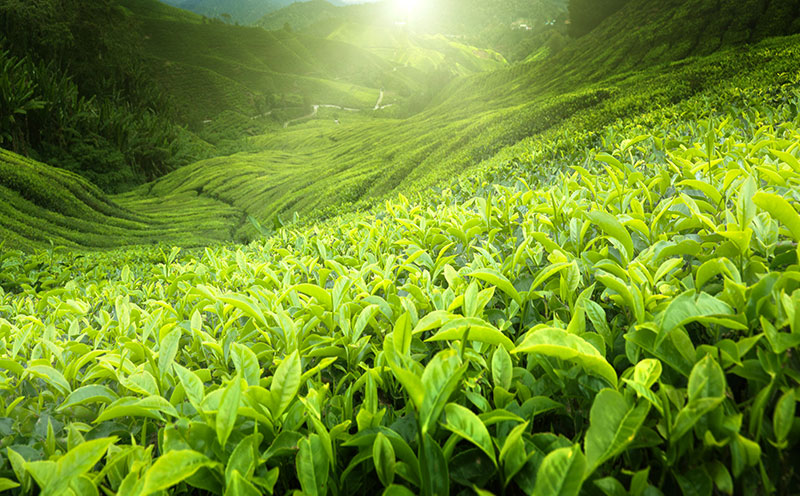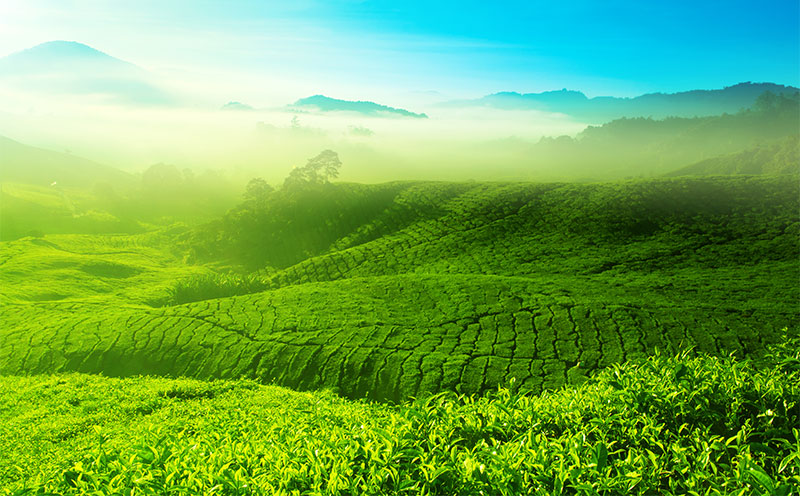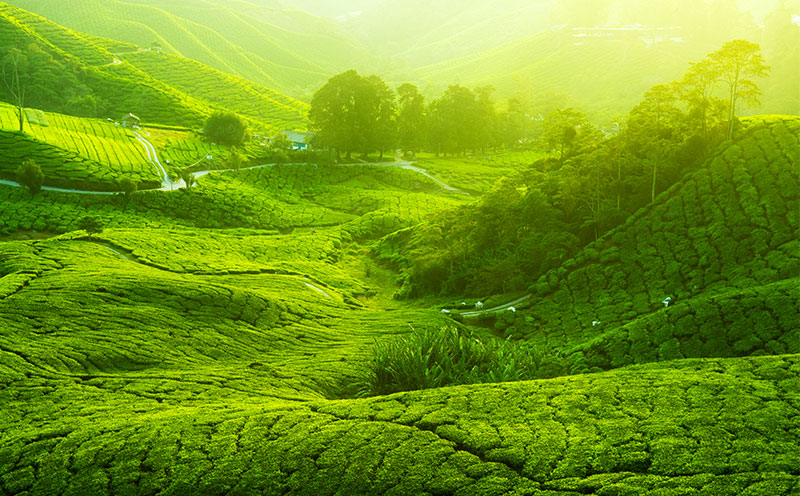Nuwara Eliya is located 1,900 meters above sea level where the daily temperatures range from a cold 4o C to a cool 22o C and is recognized by tea connoisseurs around the world as one of the finest tea growing areas. Nuwara Eliya’s teas are plucked during the dry season of December to March during the time when the tea peaks.Because the climate and soil Nuwara Eliya is an unique agro-climatic zone that gives distinct characteristics to the teas grown there. Nuwara Eliya resonates with a fragrance of cypress trees, menthol of wild mint and the pungency of pine forests along with the sight of neat rows of temperate fruit and vegetables farmed intensively in every bit of land in between the tea plantations
Its cool and temperate climate also makes Nuwara Eliya is also a favourite holiday location.The plantations are ringed by the Peak Wilderness Nature Reserve that is the source of many of the major rivers of Sri Lanka and the jungle here is the home of Sambhur or Ceylon Elk, Leopard, Wild Boar and the Bear Monkey. Some of the areas bordering the tea plantations on the Southern part of Nuwara Eliya are a source for red and blue sapphires.
Dimbula is one of the most famous names associated with Ceylon tea. It is one of the initial regions where tea was grown during the 1870’s. Seasonal Monsoon rains provides an alternating cold and dry climate that produces a range of full to light bodied and delicate teas. These plantations are located between 1,100 meters to 1,700 meters above sea level and cover the western slopes of the hill country. Dimbula’s peak tea season is from December to March.












